Texas Heeler
Named after the state where it is most common, the Texas Heeler is a mix of the Australian Cattle Dog and the Australian Shepherd. Loving, energetic, and playful, it is a popular herding dog in the American Midwest. A puppy may inherit the characteristic bobbed tail of its Australian Shepherd parent, and its ears are floppy at birth but straighten out with age. Its distinctive blue-tinged coat comes in shades such as black, white, brown, and chocolate, with patterns like merle, speckled, and bicolor.
Interestingly, the genetics of an Australian Shepherd are only sometimes necessary to qualify as a Texas Heeler. It can also result from a cross between Border Collies and Australian Cattle Dogs.
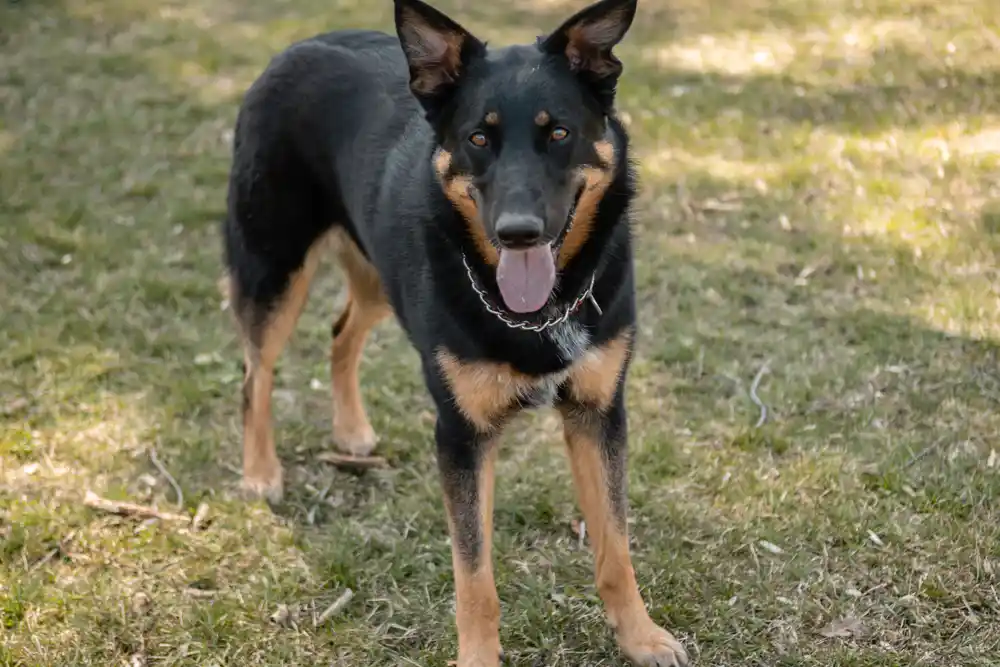
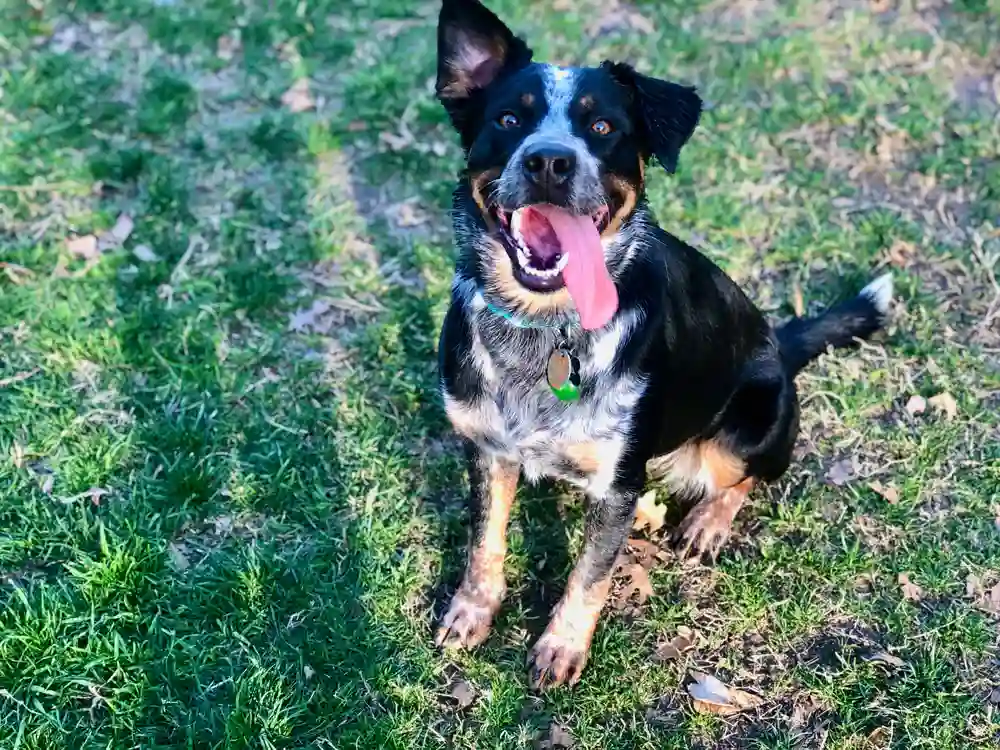
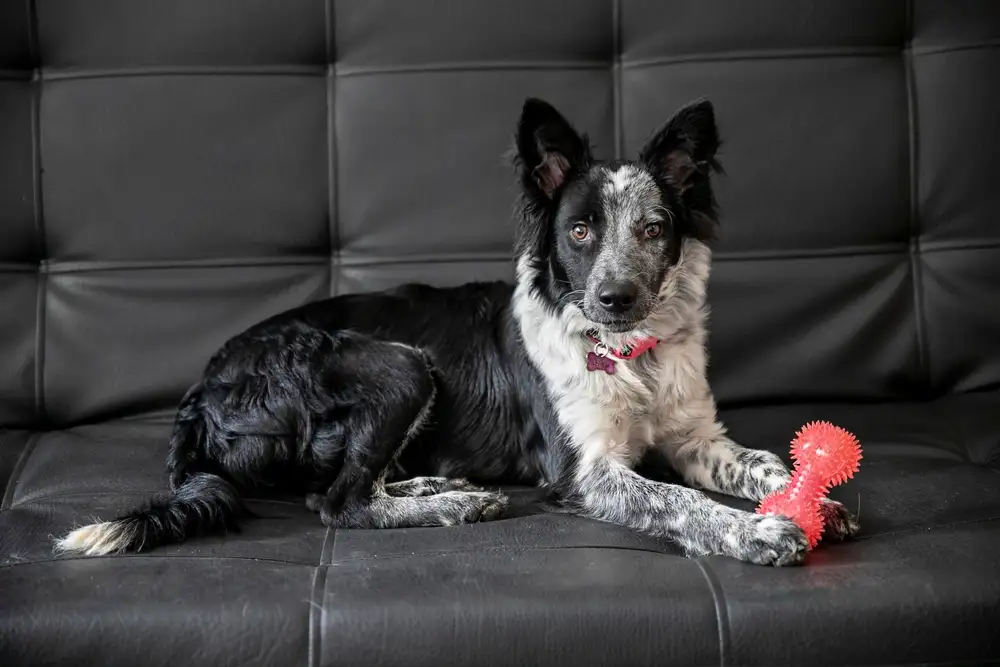
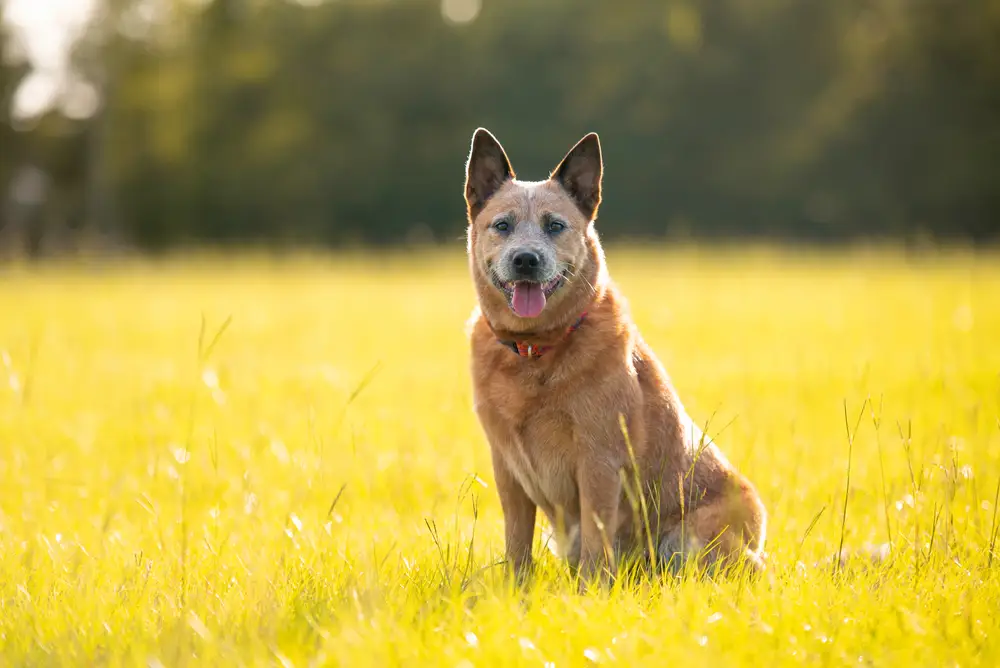
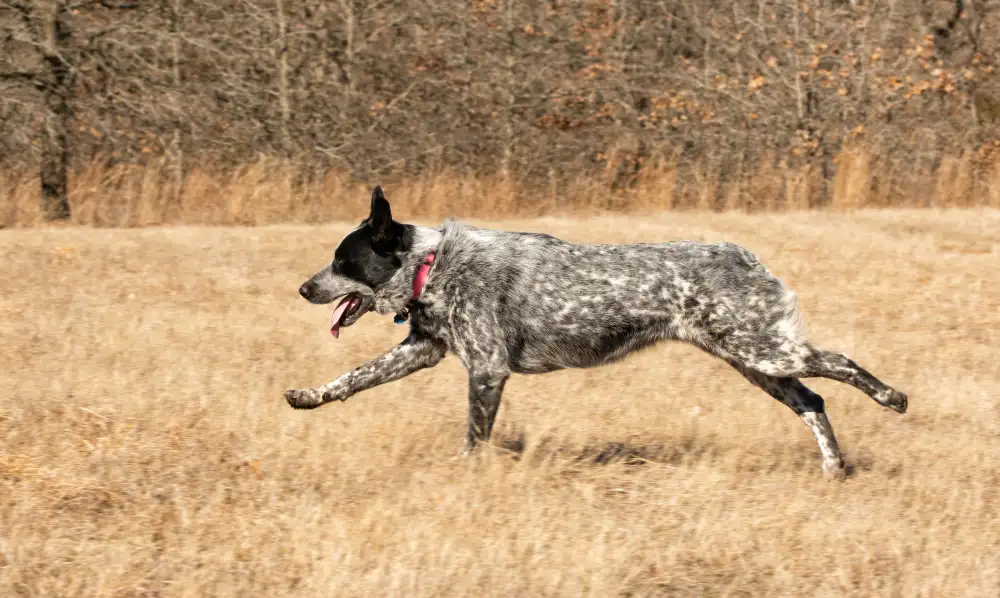
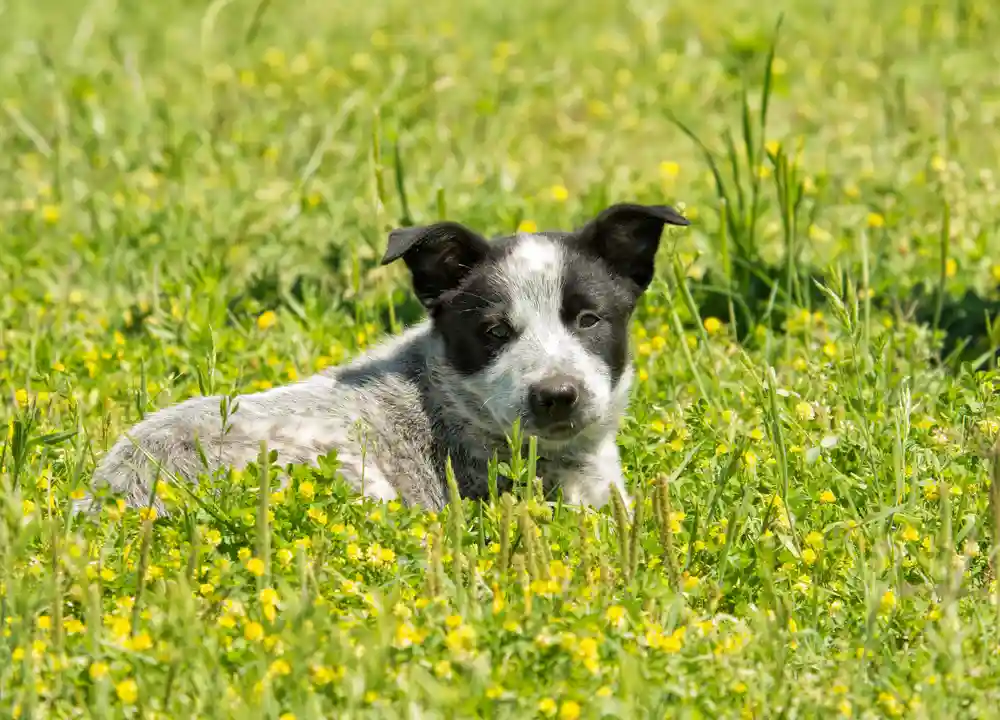
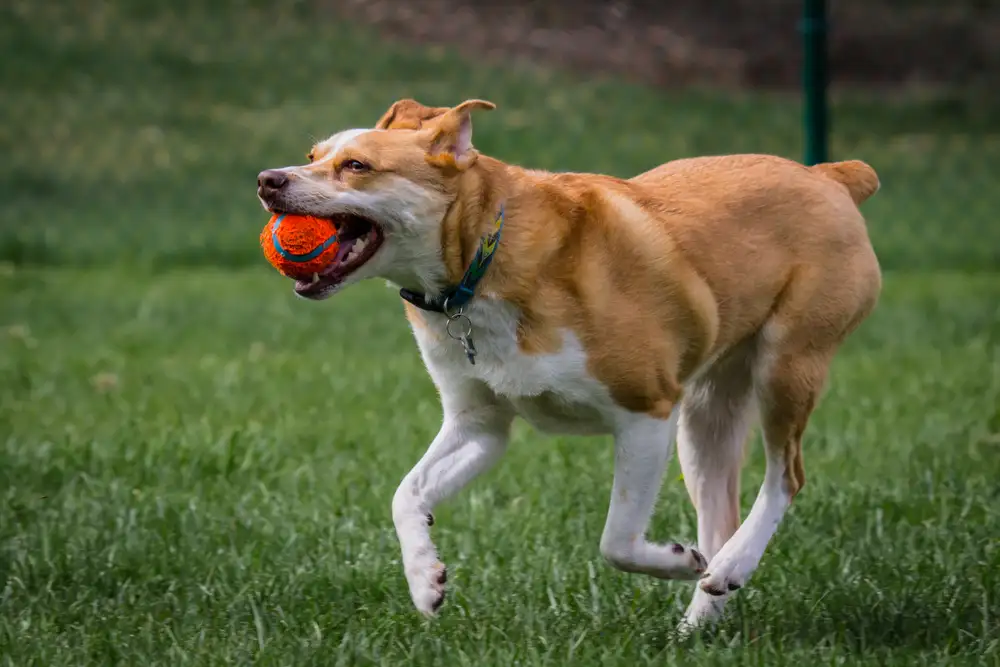
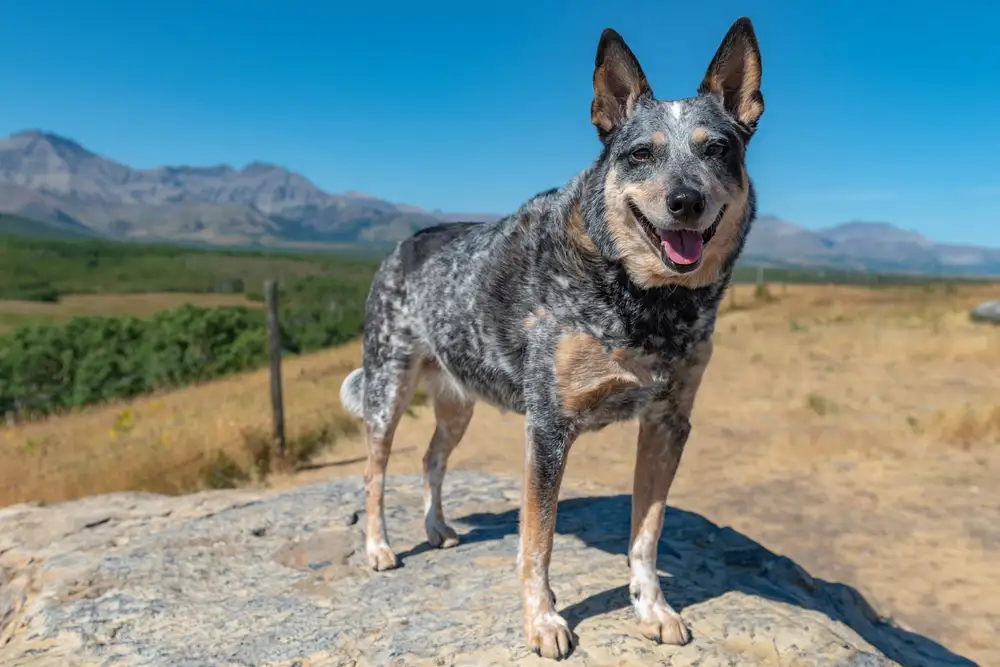

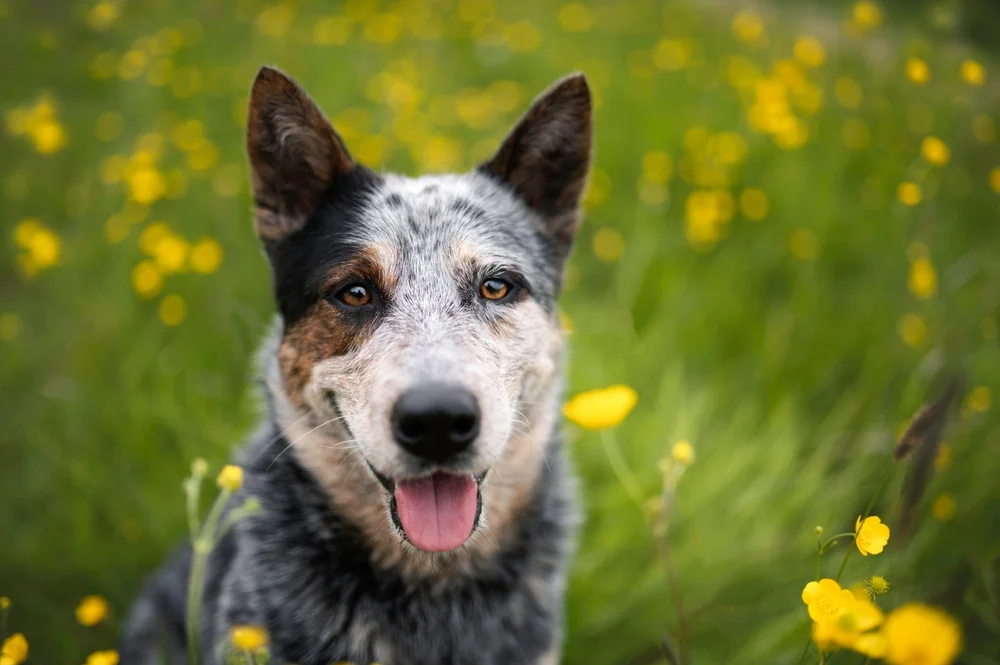
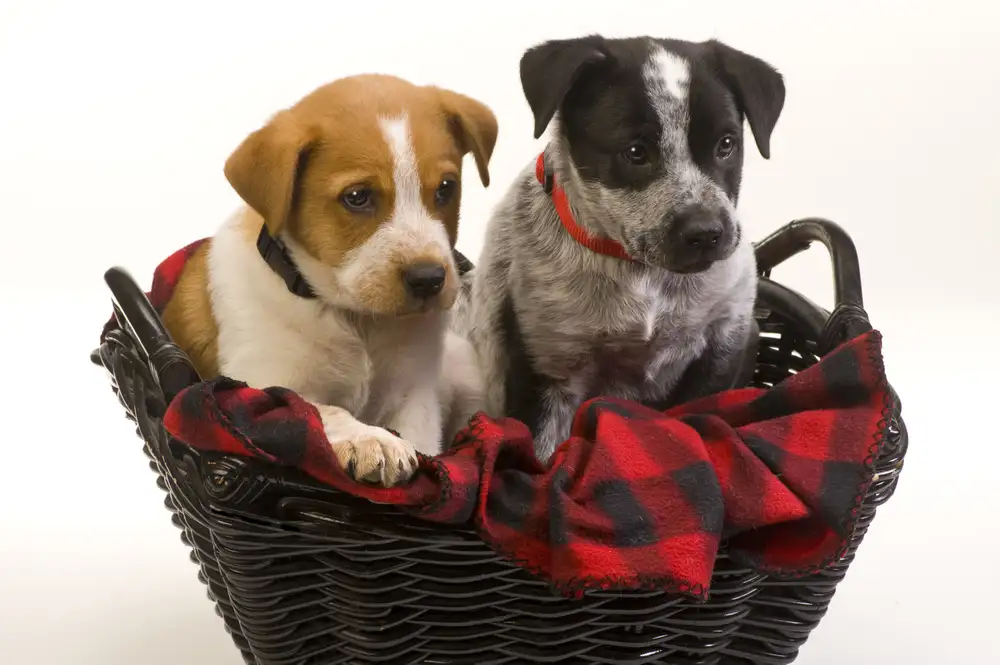
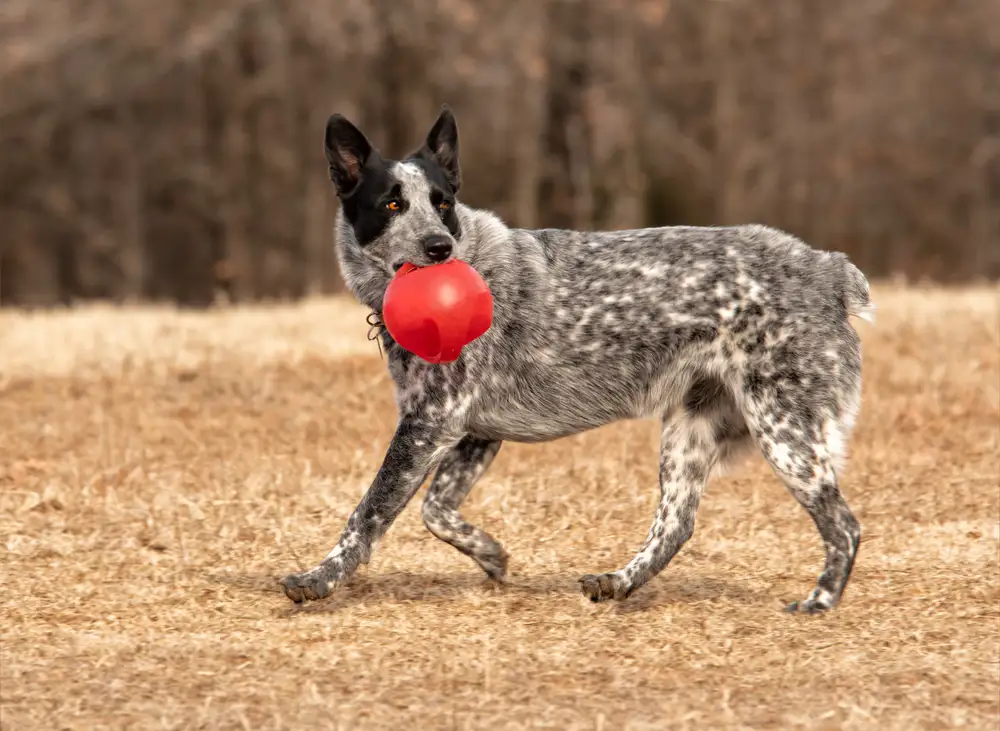
Quick Information
| Other names | Aussie Sheep Heeler, Texas Cattle Dog |
| Coat | Short to medium length, smooth, weatherproof double coat |
| Color | Blue, black, blue merle, white, chocolate, or brown with possible speckled or bicolor markings |
| Breed type | Crossbred |
| Group | Working |
| Life expectancy | 12 – 16 years |
| Size | Medium |
| Height | 17 – 22 inches |
| Weight | 25 – 50 pounds |
| Litter Size | 3 – 9 puppies |
| Behavioral Characteristics | Affectionate, energetic, cheerful, playful, and bold |
| Good with children | Yes |
| Barking Tendency | Low; they bark only when provoked or suspicious |
| Climate compatibility | High; they can adjust to both hot and cold climates |
| Apartment compatibility | Low; they are active and require open spaces |
| Do they shed | They shed moderately throughout the year, with a heavier seasonal shed |
| Are they hypoallergenic | No |
| Trainability | Moderate; they can be independent |
| How much do they cost | $500 – $1,000 |
| Competitive Registration Qualification/ Information | ARF, DRA, ACHC |
| Country | United States of America |
History and Origin
As their name suggests, Texas Heelers likely originated in the US state of Texas. Cattle ranchers desired a breed with natural herding and guarding instincts. Thus, breeders created a hybrid of Australian Cattle Dogs and Australian Shepherds, both of which were specialized herders used in the Australian Outback. However, the exact details of their conception are unknown, with the first specimen registered by Lucy Guynes in May of 1970. As public interest in designer pets grew, their popularity rose, with many opting to keep it as a companion outside its working purpose. Still, they might end up abandoned in shelters like the Texas Cattle Dog Rescue.
Temperament and Personality
Bred for work, these lively and intelligent dogs need an owner to keep up with their stamina. Apartments can make them feel confined, preferring houses with large open spaces and yards. They bond firmly with their owner and are incredibly loyal and protective. This trait and their tendency to bark around suspicious people make them excellent watchdogs. They are friendly and get along well with children and other pets. However, their herding instincts might make them nip and push others around, which needs proper discipline to correct. Providing them with a job and ample companionship is vital to avoid restless and unruly behavior. Failure to do so can result in an anxious pet that resorts to habits such as chewing, excessive barking, and damaging property. However, with enough training and correction, they become well-behaved and loved family members.
Care
Exercise
Highly task-oriented, they thrive with vigorous exercise and a job. At least thirty minutes of daily walking and intensive workouts like hiking, running, biking, and cycling are fantastic to explore together. They also adore swimming but ensure it is in a safe environment with proper precautions. Other mental and physical exertion options are fetch, puzzles, and learning tricks. They also excel at sports such as agility, obedience, dock diving, flyball, and herding trials.
Grooming
They are fairly low-maintenance, requiring a few weekly brushings with a pin brush or bristle to manage shedding. This frequency may increase during their seasonal shed, which happens twice annually. Bathe them only when dirty or once monthly to avoid drying out their skin. Check their ears periodically for signs of infection, trim their nails as needed, and clean their teeth daily.
Health Problems
They are generally a healthy crossbreed but can inherit some conditions from their parents. Some of those are hip and elbow dysplasia, distichiasis, progressive retinal atrophy, blindness, glaucoma, cataracts, congenital deafness, ligament tears, collie eye anomaly, heart problems, epilepsy, and hereditary cancers. They can also exhibit multidrug sensitivity, which can lead to life-threatening reactions to certain medications. Regular screening and buying from certified breeders can help prevent complications and ensure a long life.
Feeding
Select their diet for a medium-sized dog with high energy levels. Around three cups of high-quality kibble, split into two to three daily meals, is adequate for an adult. Formulas containing vegetables and ground bones are the best as they provide all the essential nutrients. As active herders, they require calorie-dense food. However, this makes them prone to obesity if not exercised fittingly. Thus, always consult a veterinarian for the optimal choices and brands.
Training
These mixes are quick-witted and eager to please but can be stubborn and wilful, making training difficult for inexperienced owners. Thus, one should teach them skills and be persistent from a young age for optimum results.
Socialization: Early socialization is crucial to help control their herding instincts. Otherwise, they might try to herd everyone around them. Exposure to unfamiliar environments will help them acclimate to new people and animals. Also, keep them leashed when in public to avoid running off. They are sensitive, responding best to positive reinforcement techniques emphasizing rewards for good behavior.
Obedience: They are highly intelligent, easily picking up new tricks and commands. Starting early, being patient, and keeping a steady and commanding tone can help encourage their natural learning abilities.
Interesting Facts
- They get their name from the Australian Cattle Dog or the Blue or Queensland Heeler.
- Their friendliness, trainability, and diligence make them excellent candidates for service dog training.
- Despite not having recognition from major clubs like the AKC, organizations like the Dog Registry of America, the American Canine Hybrid Club, and the Animal Research Foundation allow owners to register their pets.
FAQs
The Blue Heeler is a nickname for the Australian Cattle Dog, one of the Texas Heeler’s parent lines. Despite being the same size, they weigh comparatively more and have either a red or blue mottled coat.





